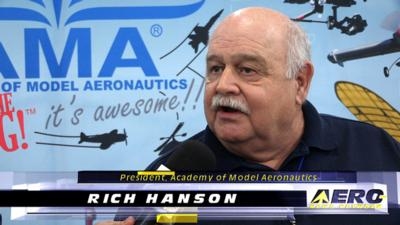Fri, Sep 21, 2018
Reiterates Support For Remote ID For Sophisticated Drones
The Academy of Model Aeronautics (AMA) has written letters to Congressional leaders in the U.S. House and Senate urging lawmakers to consider a risk-based approach to regulating recreational unmanned aircraft systems (UAS), as it works on a bill to reauthorize the Federal Aviation Administration (FAA). AMA also reiterated its support for remote identification and tracking for sophisticated drones.

In the letters, AMA president Rich Hanson outlined the importance of a risk-based regulatory approach to recreational UAS, which would ensure the safe integration of UAS into the nation’s airspace while continuing to allow responsible model aircraft operators to fly safely as they have for more than eight decades.
“Over the last several years, the FAA has adopted a risk-based approach to UAS regulation, with which we agree, and we believe it continues to serve the public interest,” Hanson wrote. “AMA stands ready to continue to work with policymakers on developing a regulatory system that increases safety and security of the aviation system without creating undue burdens on longtime, existing users of the airspace.”
Notably, a risk-based approach to regulating the manned aviation community has been successful for decades, and more recently has been used for commercial UAS operations. The letter also reiterated AMA’s support for remote identification and tracking at a certain threshold for UAS with advanced capabilities, such as sophisticated drones, but not model aircraft safely operating under the guidelines of a community-based organization (CBO).
“Policymakers have recognized that a one size fits all regulatory system has never been appropriate for aviation. The growing diversity of the UAS industry – from AMA’s weekend hobbyist operating line-of-sight to the advent of package delivery drones over crowded urban areas – precludes a single regulatory framework,” the letter stated. “AMA supports Congress giving the FAA the authority it needs to safely integrate new and complex UAS into the airspace, while maintaining the light regulatory touch that model aircraft hobbyists have operated under safely for decades.”
In conclusion, the letter affirmed AMA’s commitment to safety and notes the important role model aviation plays in developing new technologies and as an educational tool for science, technology, engineering and math (STEM) subjects.
(Source: AMA news release)
More News
Circle To Runway (Runway Number) Used by ATC to inform the pilot that he/she must circle to land because the runway in use is other than the runway aligned with the instrument appr>[...]
Aero Linx: National Aviation Safety Foundation (NASF) The National Aviation Safety Foundation is a support group whose objective is to enhance aviation safety through educational p>[...]
At Altitude Of About 250-300 Ft Agl, The Airplane Experienced A Total Loss Of Engine Power On November 6, 2024, at 1600 central standard time, a De Havilland DHC-1, N420TD, was inv>[...]
From 2009 (YouTube Edition): Three Hour Flight Was 'Flawless' -- At Least, Until Mother Nature Intervened For anyone who loves the aviation business, this was a VERY good day. Afte>[...]
Also: AMA Names Tyler Dobbs, More Falcon 9 Ops, Firefly Launch Unsuccessful, Autonomous F-16s The Air Force has begun ground testing a future uncrewed jet design in a milestone tow>[...]
 ANN's Daily Aero-Term (05.05.25): Circle To Runway (Runway Number)
ANN's Daily Aero-Term (05.05.25): Circle To Runway (Runway Number) ANN's Daily Aero-Linx (05.05.25)
ANN's Daily Aero-Linx (05.05.25) NTSB Prelim: De Havilland DHC-1
NTSB Prelim: De Havilland DHC-1 Classic Aero-TV: The Boeing Dreamliner -- Historic First Flight Coverage
Classic Aero-TV: The Boeing Dreamliner -- Historic First Flight Coverage Airborne-NextGen 05.06.25: AF Uncrewed Fighters, Drones v Planes, Joby Crew Test
Airborne-NextGen 05.06.25: AF Uncrewed Fighters, Drones v Planes, Joby Crew Test



